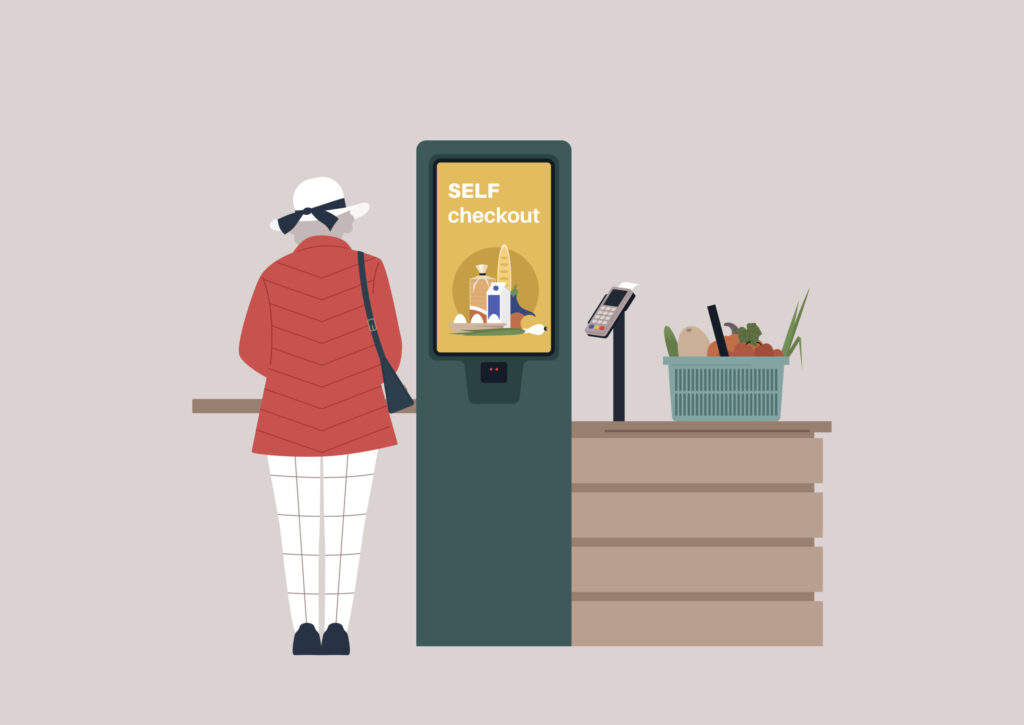By now, most of us have heard about generative AI and have witnessed the tsunami of fascination (and concern) surrounding this new, game-changing tech. People across industries are captivated by how they might leverage its powerful capabilities to revolutionize their organizations, retail industry leaders included. In this dawning age of AI-powered retail, here are some ways to keep your current customers while successfully expanding to include new ones.
Retail industry leaders are now looking to see how they can leverage generative AI’s powerful and flexible capabilities to revolutionize shopping. Cooked into the tech is the ability to optimize tasks, manage and analyze data, automate processes, craft deeper insights, connect and communicate with customers, and offer more bespoke experiences. Let’s look at a few of the ways AI may come to infuse retail.
Brand new ways to engage and support customers
Generative AI, like ChatGPT, is effective at talking, answering questions, and summarizing information in a natural, conversation-like manner, making it easy to see how this tech could revolutionize retail customer support. Think product recommendations and explanations, information about ingredients, and more. Just like medical doctors carry their mobile devices to write prescriptions and take notes, it’s easy to see how retail staff may one day it may be the norm to have an “AI co-pilot.” Some onerous tasks will be offloaded to the AI, while new ones will emerge centered on managing these new systems. Businesses that invest in training their employees to work in concert with generative AI will likely have significant advantages in the retail world to come.
Large retail juggernauts are already getting in on the game; Macy’s, for example, is now using AI-powered shopping assistants to ramp up customer experience by letting shoppers have their questions about product location and availability answered on the spot.
Hyper-relevant recommendations in a snap
Retailers have traditionally found it difficult to coalesce the disparate data they gleaned about their customers into coherent insights. Generative AI can be the key that unlocks the ability to divine hyper-relevant retail recommendations at the moment.
Uplevel product design
Generative AI can be used to fine-tune existing designs, which means retailers can instantly craft on-brand and on-trend iterations of their best-selling products. And the tech opens up a brave new world of customer customization on demand!
Revolutionize demand forecasting and inventory management
Summarizing insights from a comprehensive set of unstructured data points is something that generative AI excels at doing, making this emerging tech ideally suited to demand forecasting and inventory management. Disparate sources like market trends, weather conditions, historical sales data, social media temperature, and more can be used to get a more accurate picture of upcoming demand, allowing retailers to take a more finely tuned approach to inventory production, reducing excess and improving overall operational efficiency.
Enhancing the IRL store experience
Retail has been focused on seamlessly melting physical and digital experiences in their stores in recent years, which can be taken to the next level with generative AI. For example, by analyzing historical sales and customer preferences, along with product materials and attributes, this tech can suggest highly optimized store layouts and product placements while providing bespoke wayfinding experiences to shoppers based on their preferences.
A brand-customized generative AI app can guide you around the store, proactively recommending products and services based on your unique profile and particular in-the-moment needs. Summer garden wedding in Oaxaca? NP. Girls’ trip to the Ice Hotel in the Arctic Circle? Retail records based on generative AI will have you covered.
Virtual try-on will be exponentially improved
Generative AI can produce incredibly lifelike images on demand, which means that apparel and beauty product retailers will be able to provide “magic mirror” experiences to their customers that show how different styles, products, and colors would fit their clients—and may even be able to predict how clothing fit may change over time.
Warby Parker, the digital eyewear company, helped make a name for itself by creating a well-crafted virtual try-on using augmented reality, which can be kicked into higher gear using generative AI. Imagine the boon for lingerie e-commerce retailers, high-end cosmetics purveyors, and more.
Tracking “dwell” and “gaze” time
AI can track a customer’s “dwell” time—the time a person spends standing in front of a product—and “gaze” time—the time a person spends looking at an item. Tracking “dwell” and “gaze” time lets retailers better understand what their customers want, allowing them to increase meaningful engagement and conversion rates. Using this data, retailers can inspire customers to add more products to their carts tailored to their particular wants, needs, and desires. High-end global retailers like O2 already use video analytics and AI tech to measure these key metrics. And as we all know, the higher the sales, the higher the store’s profits.
Better-planned planograms and on-floor availability
Generative AI can significantly improve day-to-day retail operational processes, like planogram compliance. Relying on traditional methods and human assessment in forecasting demand and crafting optimal shelf-layouts for products is less advantageous than using generative AI to help design the best possible displays. AI software can alert staff members when planogram compliance and on-floor availability dip below par. And get this; AI can even identify empty shelves.
The power of personalization
The power to improve customer engagement and personalization can set the stage for deeper and more trustworthy relationships between retailers and their customers. By divining more intuitive insights from customer data, strategies allowing for a more personalized experience can be crafted, boosting online and IRL sales.
Bottom Line
Strong generative AI capabilities will soon become a baseline necessity for retailers that want to keep pace with their peers, so it’s wise for retail leaders to explore what aspects of this emerging technology will have the most impact on their businesses.
Now is the time to indulge in a test-and-learn mentality as more generative AI-integrated tools arise for retail stores in the coming years; explore how AI can transform operational processes and allow for a better customer experience. Given how efficient, intuitive, and accurate AI can be, it’s just a matter of time before the retail landscape is infused with it.
We are at the beginning of the generative AI tech revolution, which is advancing at breakneck speed. We have yet to learn all the ramifications of this burgeoning tech, which is why generative AI must be used responsibly. Setting guardrails for how data is acquired, used, and deployed is crucial—as is ramping up cybersecurity infrastructure. By incorporating good corporate stewardship of this new technology, you can ensure that you are moving into the future with responsibility baked in by design.
About the author.
An award-winning creator and digital health, wellness, and lifestyle content strategist—Karina writes, produces, and edits compelling content across multiple platforms—including articles, video, interactive tools, and documentary film. Her work has been featured on MSN Lifestyle, Apartment Therapy, Goop, Psycom, Yahoo News, Pregnancy & Newborn, Eat This Not That, thirdAGE, and Remedy Health Media digital properties and has spanned insight pieces on psychedelic toad medicine to forecasting the future of work to why sustainability needs to become more sustainable.




